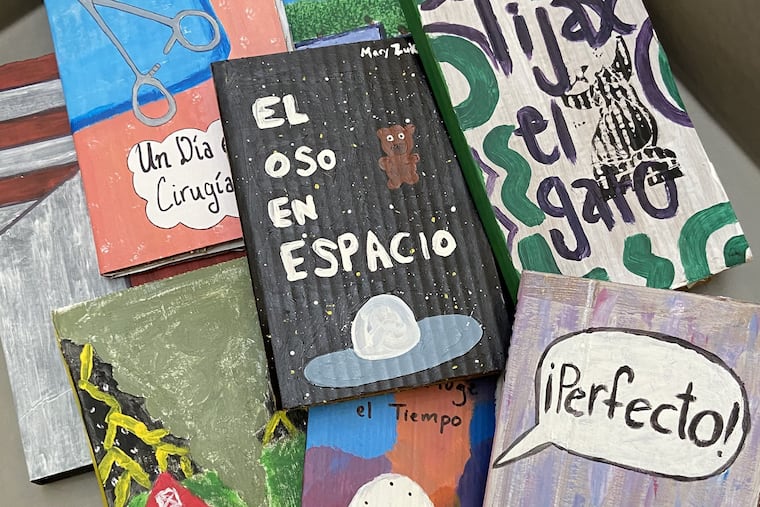This exhibit of handmade, cardboard books honors grassroots Latino culture
“Drexel Cartonera: Memorias al Cartón,” a new exhibit at Drexel University featuring student-made books, explores the Latin American “Cartonera” movement.

In the early aughts, an innovative, grassroots, and rebellious style of book publishing began in Argentina.
The country faced an overwhelming economic crisis, driving an increase in the number of “cartoneros,” or people who collect cardboard and other salvaged materials so they can be sold off. Several Argentinians began using this cardboard to make books, both painting the covers and binding them by hand. They established cartonera publishing houses, using the low-cost books to make reading and publishing more accessible.
The cartonera movement spread through Latin America, and has made its way to Drexel University’s campus. The W.W. Hagerty Library is holding an exhibit of student-made cardboard books written in Spanish, called “Drexel Cartonera: Memorias al Cartón” (cardboard memories). The exhibit, which in the library lobby at 3300 Market St., is free and open to the public and will be on display until June 14.
“Writing and publishing [became] a creative act that anybody could participate in, unlike a traditional publisher where you have to go through many, many steps, and a lot of people still don’t make it,” said Celeste Dolores Mann, an assistant professor at Drexel leading the project and moderating Wednesday’s panel about the cartonera movement.
“The people who originally created these books were the people who were picking up the cardboard or selling the cardboard, people who didn’t have means. Some of them might have even been homeless; ... the process of making the books was very grassroots,” she said.
» READ MORE: Spanish readers now have colorful community libraries in South Philly
“The cartonera movement itself really spoke to the library staff because part of that movement is ... making sure that everyone can read stories and have access to books. And that’s part of our mission, too,” said Stacy V. Stanislaw, a Drexel Library staff member who is organizing the exhibit and panel.
Mann’s students in Spanish 410, “Performing Spanish,” a course that intertwines language instruction with performing arts, have been working diligently on these books since the beginning of the class. Mann believes that the arts are a perfect vehicle for teaching and exploring language; she once left her career in academia to pursue a career in opera. This is the second year she has taught Drexel students about the cartonera movement, and she believes that the process of making these cardboard books is, in some way, a performance onto itself.
“What I think it really does for language and for students, in general, is that it taps into a part of them, ... a human side of them that is often neglected at the university level,” she said.
Each student wrote an original story in Spanish to be featured in the books. The topics included a modernized version of an Indian myth about rice, fables with personified animals, and memories of skiing.
Mann hopes that as the exhibit is on display through the summer, people come see it and appreciate the ingenuity and renegade nature of the cartonera movement.
“It’s a way for people [here] to understand the inventiveness, the creativity that started in Argentina and Brazil among people, this grassroots movement for ... getting written books out to the people and let people who might not necessarily have the opportunity to publish to get their work out there,” she said.